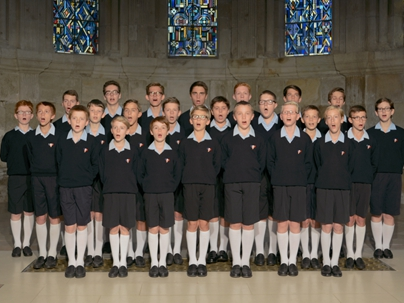
Venue: National Centre for the Performing Arts - Concert Hall
Date: May 31, 2018
Programme
CLASSICAL MUSIC
Saint-Saens
Tollite Hostias (with piano)
Scarlatti
Laudate Dominum (with piano)
Buxtehude
Alléluia (with piano)
Bach
Jesus Bleibet Meine Freude (with piano)
Mozart
Alléluia (with piano)
Caccini
Ave Maria (with piano)
Duffaure
Stabat Mater (with piano)
Sermisy
Tant Que Vivrai (A Cappela)
Saint-Preux
Concerto Pour une Voix (A Cappela)
Passereau
Il est bel et Bon (A Cappela)
Mozart
Berceuse (A Cappela)
Steurlein
J’entends une Chanson (A Cappela)
——Intermission——
WORLD MUSIC
French Song
Mediterrannée
Spanish Song
Hay Linda Amiga
Swedish Song
Vem Kan Segla Forutan Vind
Canadian Song
A la Claire Fontaine
US Song
Go Tell It on the Mountain
Martinique Song
A la Claire Fontaine Créole
Reunion
P’tite Fleur Fanée
Venezuelan Song
Alma Llanera
Mexican Song
Cielito Lindo
North Korean Song
Onara
Philippines Song
Bahay Kubo
Japanese Song
Sakura
Chinese Song
Dili Dili
Presenter
The Little Singers of Paris
In the summer of 1906, two young students, Pierre Martin and Paul Berthier (Father of the composer Jacques Berthier and grandfather of France Gall), were on vacation in the abbey of Tamié in Savoy. They came up a “dream” which plans to start a ma?trise (choir school) for child choristers that would travel from church to church, town to town, to carry the living testimony of the authentic tradition of religious music.
Their dream came true in the next year. Despite the lack of money, their enthusiasm brought them to settle in an old dwelling in Paris suburb and they started to receive their first scholar.
This was the birth of Les Petits Chanteurs à la Croix de Bois (The Little Singers of Paris). The first rehearsal took place on January 10th, 1907 and the first concert was held in the Parish Church of the Kings of France, St-Germain l’Auxerrois in October in the same year. It was well-received by music lovers in Paris. Les Petits Chanteurs à la Croix de Bois were soon become popular throughout France. In contrast to the music style in vogue at the time, the quality of the choir’s singing and the purity of the young voices aroused astonishment and enthusiasm in the audience.
The choristers were dressed in white albs and had a little wooden cross round their necks, which instilled a sobriety and were regarded as signs of the music revival. The legend of this choir school commenced.
Though the choir school was suffered from the ordeal of the First World War in 1914-1918, it did not hinder their faith. The school went on more determined than ever, once the war was over. In 1924, Abbé Maillet was appointed as the school's director. A young priest with outstanding stature and full of faith, he immediately stamped his personal imprint in the life of Les Petits Chanteurs. Before that, the choir's repertoire was exclusively religious works of the Gregorian and polyphonic music of the 15th and 16th centuries. He refreshed Les Petits Chanteurs by bringing a repertoire of popular songs in French or from foreign countries and other works by leading composers in time. Through expanding its repertoire, the Choir had reached a broader audience.
Abbé Maillet also brought Les Petits Chanteurs out of France, initially to neighboring countries, and then, in 1931, with an audacity unheard of in those days, to North America. Les Petits Chanteurs received a triumphant welcome in the United States and Canada. It was the beginning of the international and worldwide delegation covering today a total of 80 countries and four rounds of the world tours. The little choristers who take part in these trips have received only a period of training and preparation in school. Teachers who accompany the students teach them from time to time in the trip for a well-practiced routine and it requires the students a certain degree of discipline.
The "Little Singers" will leave the choir when they reach 15 years old and continue their education in secondary school. These "Little Singers" may have moments of nostalgia in the beginning of their new school life but with their wealth of experience and exceptional spirit of anticipation, they are open to face the future. Today as at the beginning, Les Petits Chanteurs are managed by collegial leadership, they continue their role of Little Singers of Peace, with Hugo Gutierrez as the Music Director.



